In today’s video we will go over some tips to grow delicious mangoes or Magnifera Indica at home. You can easily grow mangoes in containers as well as in the ground. We planted our mango tree in a whiskey barrel sized container, 22 inches in diameter. You need to make sure you add good quality potting mix to your container. We are using a ready-to-use potting mix from a local nursery at Laguna Hills called Gary’s best top pot potting mix. Alternatively, you can also make your own potting mix using two parts of sand, all-purpose sand that you can find in any hardware store, one part of pumice or perlite, and one part of peat moss. Mangoes love this kind of well-draining soil and it?s cost-effective to make your own potting mix than using the bagged ones that are available in the local gardening stores.
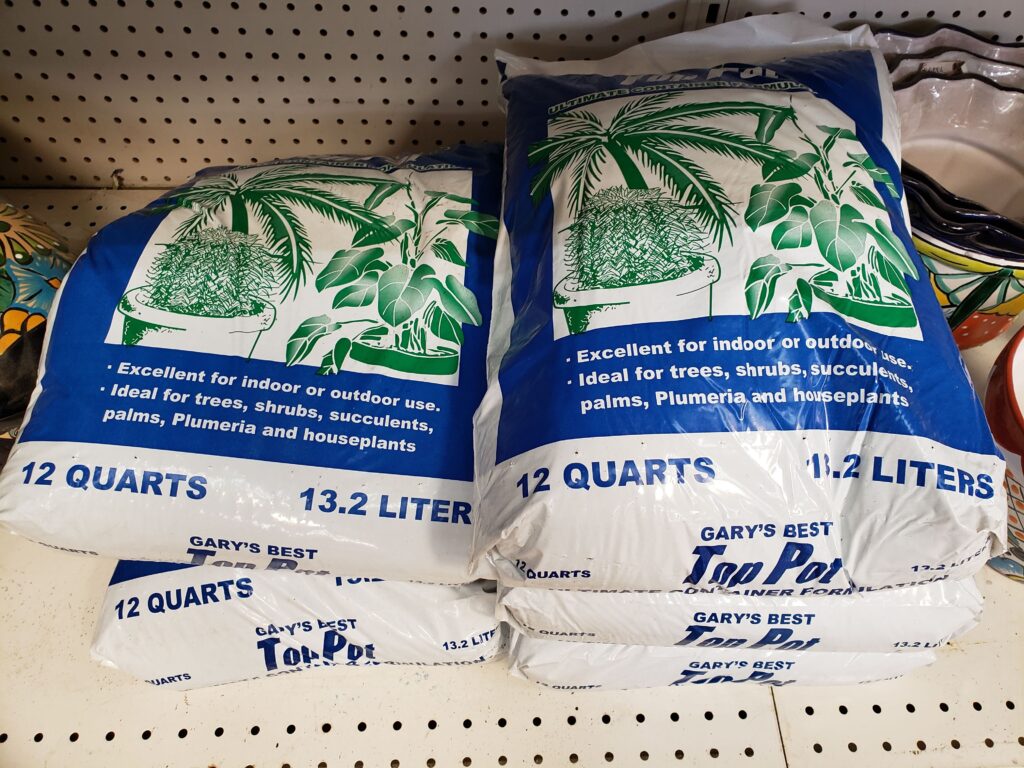
Gary’s Potting Mix
You can start your mango plants from seeds, but I would highly recommend buying grafted mango trees from a reputable source. When growing mango plants from seeds, the plants may not produce any fruits for 15-20 year. We bought our grafted mango tree, Little Gem variety from Logees which is an online nursery, but you can look around your local nurseries to find the variety that will grow well in your Zone. During planting add slow release fertilizer like Osmocote which will provide nutrients to this mango plant for about six months. Or, you can use an organic fertilizer for your fruit trees. After fertilizing water your plant thoroughly making sure that there are no air pockets in the container.
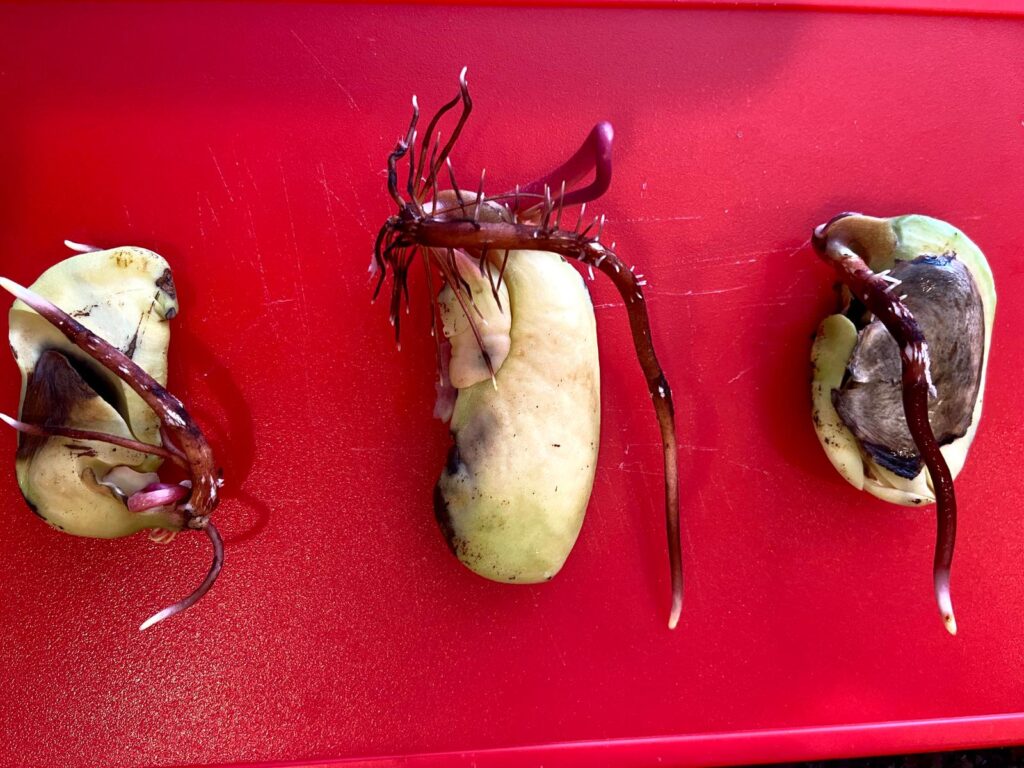
Mango plants from seeds
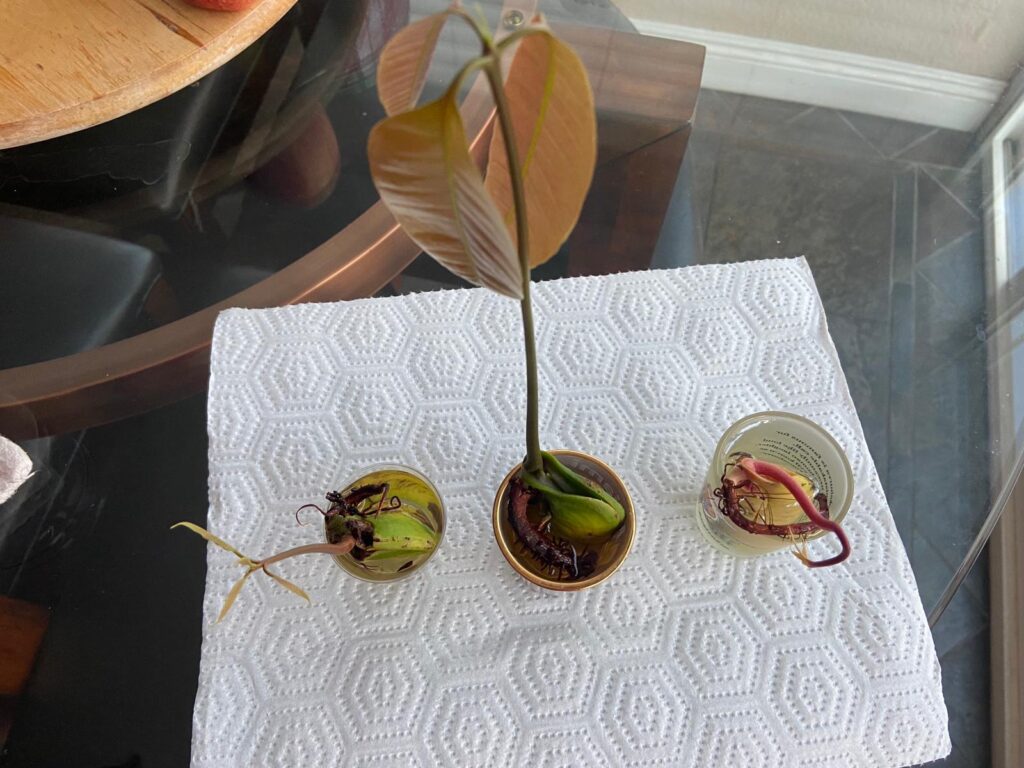
Mango plants from seeds
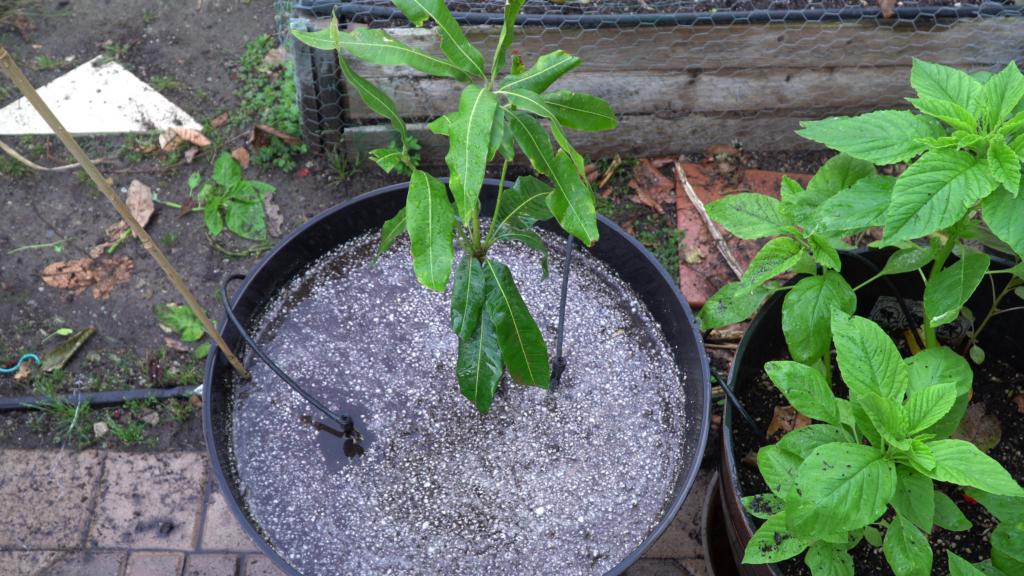
Planting a grafted tree
Little Gem mango is a dwarf variety which grows to about four to six feet and produces abundant mangoes, so it’s a great option if you want a compact tree and are short on space as it can easily grow in containers. Now 66 days since planting you can see that the plant is looking good the leaves are looking healthy and at 120 days you can expect to see some new growth and you can see new leaves being formed on the plant. You will soon see more new leaves as the plant grows and the roots establish. Mangoes grow slowly here in southern California but usually around the month of September or October they produce new leaves which helps the plant grow larger and bear all the fruits in the upcoming year.
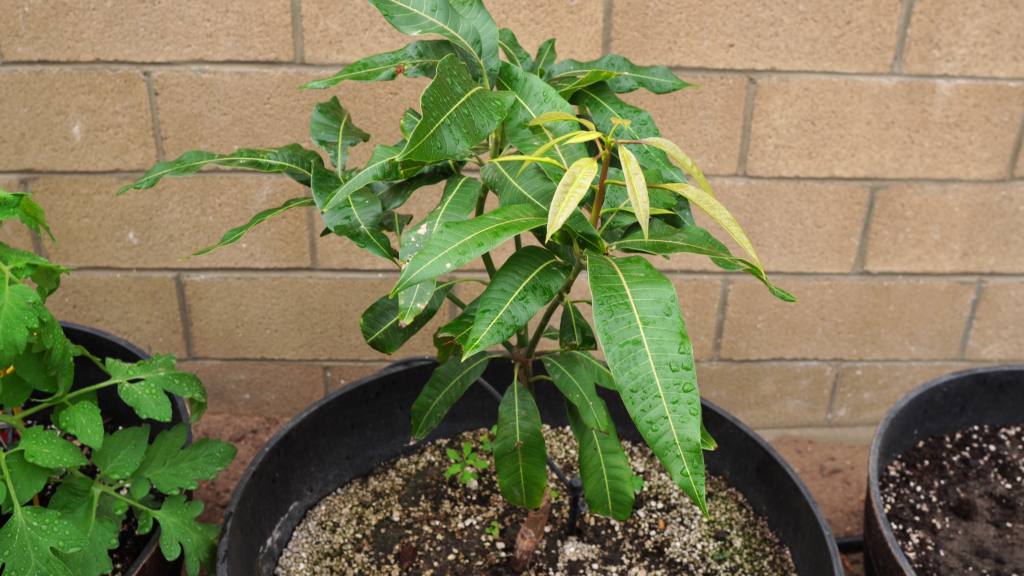
New leaves growth
We transplanted the plant in the ground when we moved to our new home. When you’re transferring a plant into the ground you need to dig a hole which is at least twice as wide as the size of the root ball of the plant and at least as deep as the container. Mix in 50 percent of native soil with 50 percent planter mix or compost and that should give you a good medium to start your plants in the ground. Around the month of April which is around 315 days since planting we could see the mango plant was in full bloom. The mango plant will produce lots of clusters of flowers but most of them will shed and only strongest ones remain on the plant and become fruits.
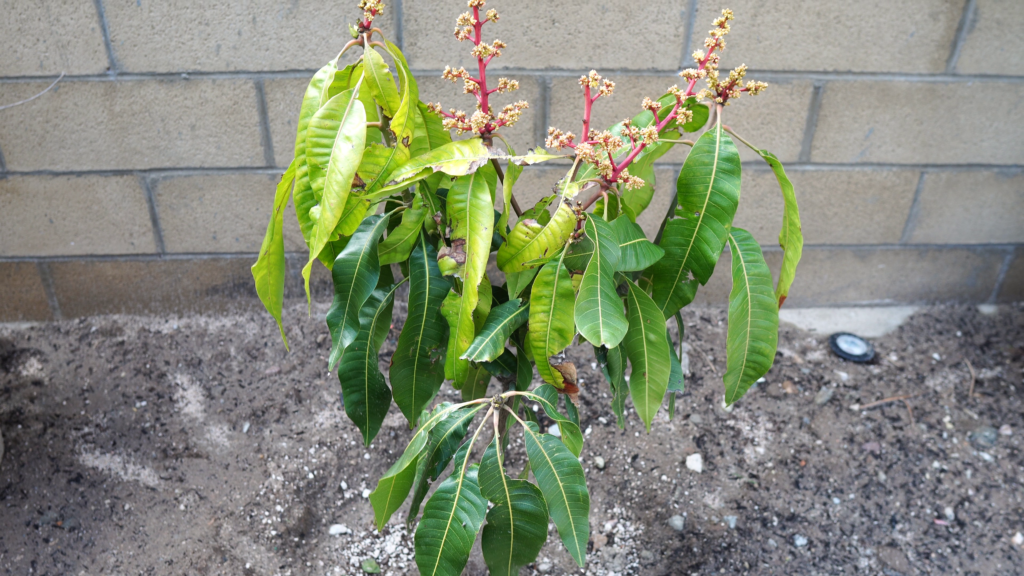
Mango plant flowering
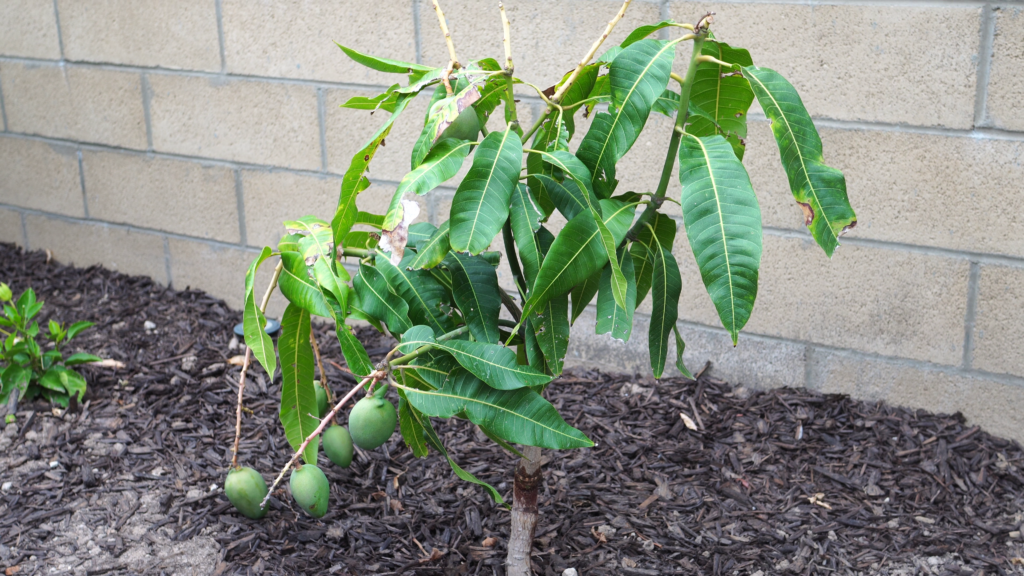
Mangoes forming on the plant
One year and one month since planting which is around July you can see that the fruits are being formed and most of the flowers have dropped. The fruits are not huge sized, but they pack in a lot of flavor. Now in southern California, mangoes are not extremely easy to grow but you can see that some varieties like Little Gem mango are relatively easy to grow. ?The mango fruits will slowly start getting larger in the upcoming months.?
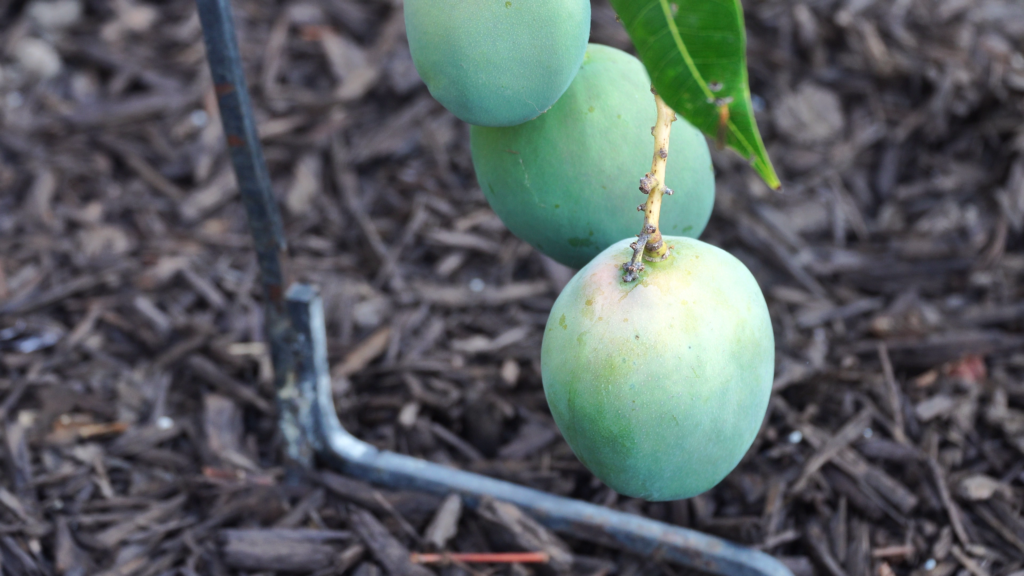
Mango fruits becoming larger
As the mangoes ripen you will start seeing a yellowish tinge on the fruit and around September, one year and three months since planting the fruits were ready for harvest. While you can leave the mangoes on the plant to ripen, we had such intense heat and sun that it was scalding the mangoes. So, we decided to harvest the mangoes at this stage and ripen them on the shelf. You can easily ripen them indoors by keeping them in a bag of rice or a brown bag with banana to hasten the ripening process. The mangoes were devoured in no time and it tasted very sweet and delicious.

Mango harvest
Now in October, around one year and four months since planting the plant continued to grow more leaves, branches preparing to bear fruits in the upcoming year. At this stage you can add a good quality organic fertilizer, here we are using a fruit tree fertilizer and mixed in some worm castings with some homemade compost. This will add a lot of beneficial nutrients to the soil and adds a lot of beneficial bacteria and microbes which will improve the condition of your soil and help your plant grow to its full potential. Water your plants thoroughly and you’re all set to get delicious fruits in the upcoming year
Since mango is a tropical plant you need to protect the plants from cold winters and frost in your area. You can put a tomato cage if your plant is small or build a structure using PVC pipes and cover it with a protective cover. If you are growing your mangoes in containers you can get them indoors to protect the plant from extreme weather. This is extremely important in the first year of growth. To summarize here are some tips for growing mangoes at home

Protect your plants in winter
- Always buy a grafted plant and never start your plants from seeds.
2. Protect your mango plants in winter/frost by covering them or bringing them indoors if they are in containers.
3. Choose a variety that will grow well in your growing zone. Little Gem grows well in SoCal.
4. Make sure you water your plants and add fertilizer for nutrients throughout the growing season.
We also have some other varieties of mangoes growing in our garden and will share updates with our viewers soon in our monthly fruit tree tour. To learn more watch the video at ‘The Joy Of Growing Mangoes – How To Grow Mango Trees’.

0 Comments